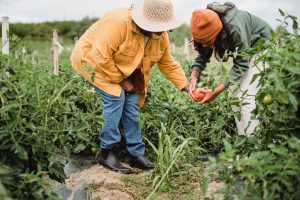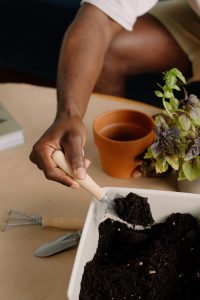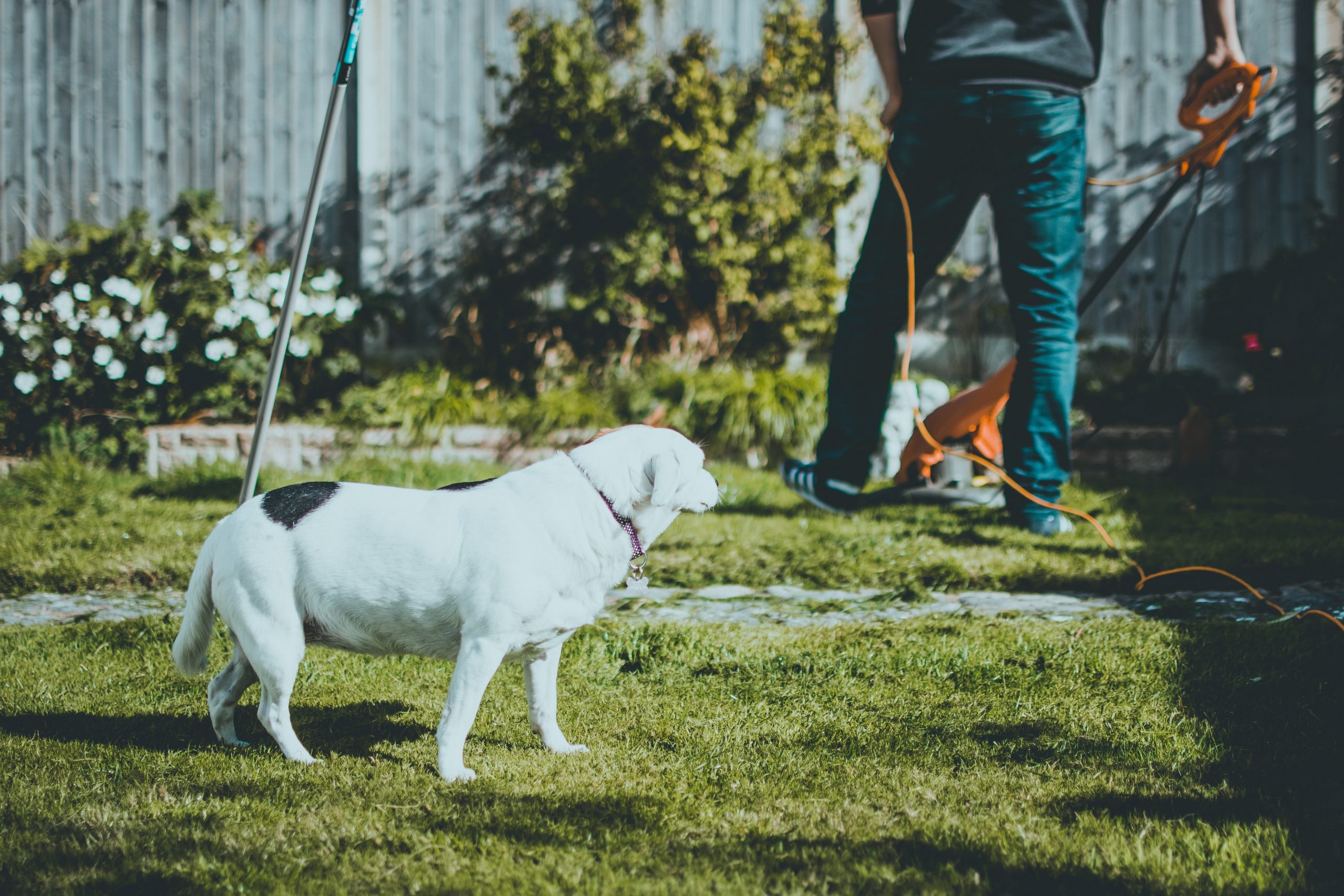Of the 27 million gardeners in the UK, how many do you think compost?
It could be as few as a third, according to a study by the Royal Horticultural Society, the UK’s largest gardening charity. But there is hope for the future with younger people showing more interest than the older generation in learning how to start composting.
The study found that those who compost tend to be older – over 55 – but that age group also showed the most resistance to starting if they didn’t already. The age group most likely to start composting was in the 18-24 age range. Social media is thought to be the reason why more and more young people are getting interested in gardening, or even just cultivating house plants which are especially popular with those living in flats.
Among all ages who took part in the study, a third of those who don’t currently compost said subsidised bins from local councils would get them composting.

We believe there’s a home composting solution for everyone. For example, older people, or those pressed for time, might prefer a Green Cone, which only accepts food waste and requires no aeration or maintenance. It doesn’t actually produce compost but a nutrient-rich liquid that seeps from its underground basket nourishing the surrounding soil. Read about some of our customers’ experiences of using a Green Cone: The long, long life of Green Cone food waste composters (greatgreensystems.com)
Young people with no access to a garden could consider a wormery, which can be kept indoors, and is a great way to turn kitchen waste into food for house plants.
Bokashi bins can also suit those in flats, especially if they can donate the fermented pre-compost that is produced to a friend or neighbour with a composter or to a community or allotment composting project. Bokashi bins take all food waste along with the addition of beneficial microbes in the form of a spray or bran. The full bin is left to ferment anaerobically (without air) for around two weeks while the contents become a pre-compost mixture which can then be added to a composter or buried in soil. Bokashi juice that is drained from the bin is full of nutrients and can be diluted for use as a feed for house or garden plants. It can also be used undiluted as a drain cleaner. Read our blog about how one family work as a team using a bokashi system: Helping the planet by switching to bokashi composting (greatgreensystems.com)
Studies have shown that the reason why many people don’t compost is fear of getting it wrong.
That is such a shame because really there is no wrong; there is only an imperfect situation in need of a helping hand (as the PR department at Compost HQ might say).
The big thing to realise is that if there’s an issue, there’s a remedy.
Composting is so beneficial for the environment, as well as your garden, that it’s well worth learning the few basic rules to ensure success.
Compost, when added to soil, helps to capture carbon in the atmosphere, improves plant growth, conserves water, reduces reliance on chemical pesticides and fertilisers, and helps prevent nutrient runoff and soil erosion. What’s not to like? It’s estimated that the average amount of compost made by home composting is 280 litres, enough to improve the soil structure of 5 square metres of garden.
There are a few basics to learn with composting but once you know, you know. The facts of nature don’t change. We invest time learning how to use the latest gadget, how much more important to learn how to feed the earth?

Here’s the thing; if things aren’t going great your bin will let you know – usually by starting to smell or looking a bit slimy. If that’s the case we need to go back to basics.
Composting essentials
The basics of composting are about providing good conditions for the insects, micro-organisms and worms that will be digesting the waste. They need three essentials:
- Waste materials
- Water
- Oxygen
MATERIALS
The composting creatures in your bin grow thanks to protein in waste materials that are high in nitrogen and they get energy from sugar in waste that is rich in carbon. Your aim is to find the right balance between the amount of nitrogen and carbon. In composting circles, nitrogen-rich materials are often referred to as Greens and carbon-rich materials as Browns.
Greens (nitrogen-rich) include: food waste, fresh grass, soft leafy plants, fresh leaves and hedge clippings, wilting flowers, tea leaves, plastic-free tea bags, coffee grounds. These items break down quickly and contain moisture so they keep the bin’s contents moist.
Browns (carbon-rich)include: shredded twigs, branches, dead leaves, paper, cardboard, straw, wood chips, sawdust. These contents are drier and slower to break down. They also provide fibre and allow air pockets to form for aeration.
A mixture that contains half Greens and half Browns is a great place to start for composting. Often people find they have a lot more nitrogen (food waste) than carbon (woody items, dry leaves, paper, cardboard) so it’s a good idea to stockpile these carbon inputs so you have them ready to add with food waste. You can keep them in lidded containers or tied bags close to your composter so that when you add a container of food waste you can add a container of carbon-rich Browns at the same time.
Chopping or shredding woody garden waste (no larger than 5cms) increases the surface area in contact with microbes in the pile. The finer the compost materials are shredded, the faster the pile heats up.
If the nitrogen/carbon ratio isn’t ideal the micro-organisms won’t decompose the organic material as quickly. Getting the ratio right can be a case of trial and error but you will learn quickly through paying attention to conditions in the bin.
Everything has its own carbon/nitrogen ratio but you don’t need a calculator and spreadsheet to work it out. If you plan to balance the amount of carbon and nitrogen in a 50/50 ratio you won’t go far wrong. Adding bokashi bran will also help to speed up decomposition by adding more microbes to the mix.
Your composting ratio might not be something that you get right immediately. Knowing how much carbon to add to your pile is something that compost-makers are constantly figuring out.
WATER
You want your compost pile to be moist, rather than wet or dry. The materials should feel damp like a wrung-out sponge. The ideal water content is around 50 per cent. You can check this by using a moisture monitor or by doing the ‘squeeze test’: take a large handful of compost and squeeze – only one or two drops of liquid should be produced.
Microbes struggle if their environment is too wet or too dry. They need water to live, yet too much moisture can limit the amount of oxygen they receive. If compost is too wet, it will start to smell. If this happens you need to add shredded paper and cardboard and mix well to absorb moisture and make the contents drier.
If you need to add water to compost that is becoming dry, use rainwater from a water butt if you can rather than tap water.

OXYGEN
The fastest form of composting is done by aerobic organisms that need oxygen. To give microbes air to breathe we need to add air to the mixture by aerating regularly to make sure there’s oxygen throughout the bin.
Wood chips are useful materials to add as they provide pathways for air and you may be able to get them for free from a local tree surgeon if you are able to accept large amounts. You can create air pockets by adding some cardboard tubes from toilet or kitchen rolls whole and keeping cardboard egg boxes whole. Scrap paper can be added scrunched up, as well as shredded, so that it provides pockets of air. You can also create air spaces by pushing a couple of sticks down into the compost and leaving them there – remove them when you aerate and replace them.
The most common rectifiable issue (we won’t say ‘mistake’ for the sake of those mentioned above who are afraid of getting things wrong) is slimy compost that may start to smell. This is caused by too much nitrogen-rich content (which makes the pile wet) and lack of aeration. A smell is a sign that the compost has become anaerobic (without oxygen) so you need to aerate the whole pile so that aerobic microbes dominate once again. Using a garden fork will enable you to dig down and get air into the whole pile. Also add plenty of chopped or shredded carbon-rich inputs (branches, twigs, autumn leaves, paper, cardboard, wood chips) as described above. Sawdust is also useful in absorbing excess moisture. Make sure to add it in thin layers and mix in well to avoid it forming clumps.

Sometimes the problem is caused by the addition of large amounts of grass clippings in one go. Grass mowings should be added in thin layers balanced with carbon inputs or they might clump together and form a soggy mess. Again, adding dry carbon-rich inputs and aerating will help to bring moisture levels back to the ideal consistency of a wrung-out sponge.
Learning to ‘speak compost‘
One of our customers teaches groups of people of all ages and backgrounds how to compost using the Green Johanna and she reckons that within a few months anyone can ‘speak compost’.
In fact, she says that most people she works with go from knowing nothing whatsoever about composting to becoming ‘compost evangelists’.
You have been warned.


